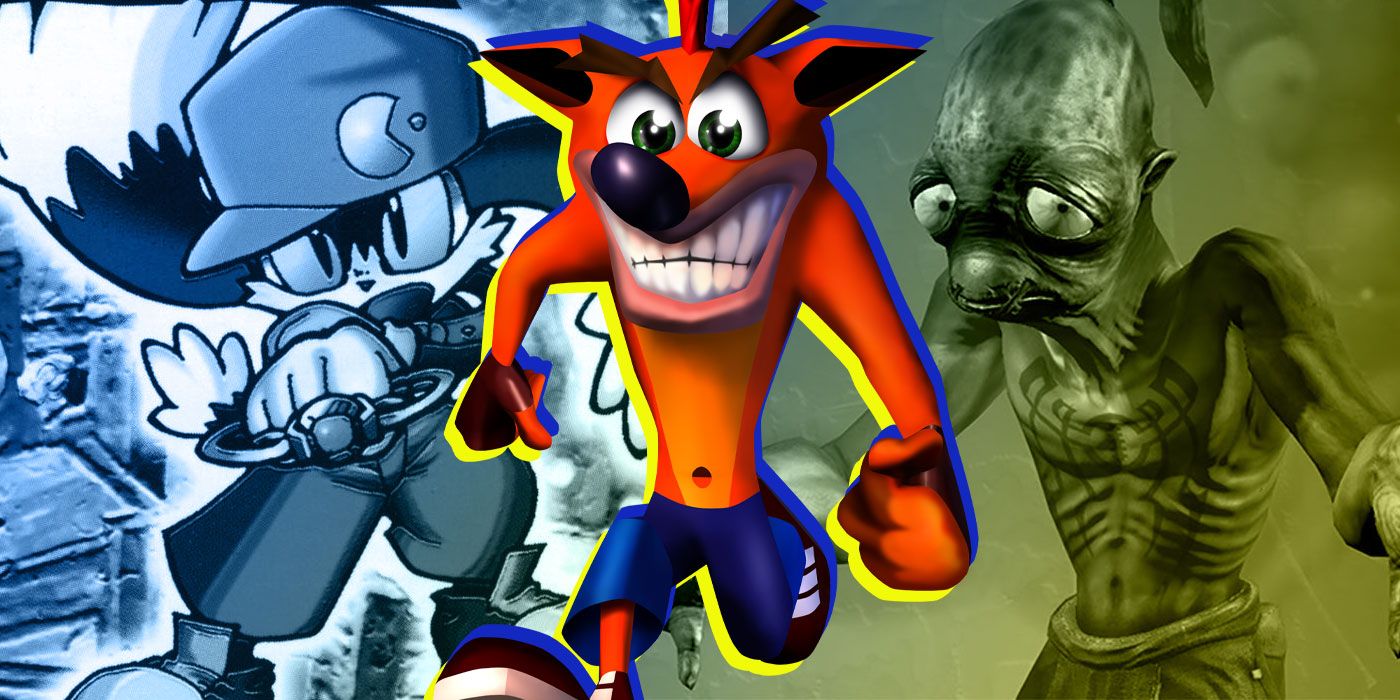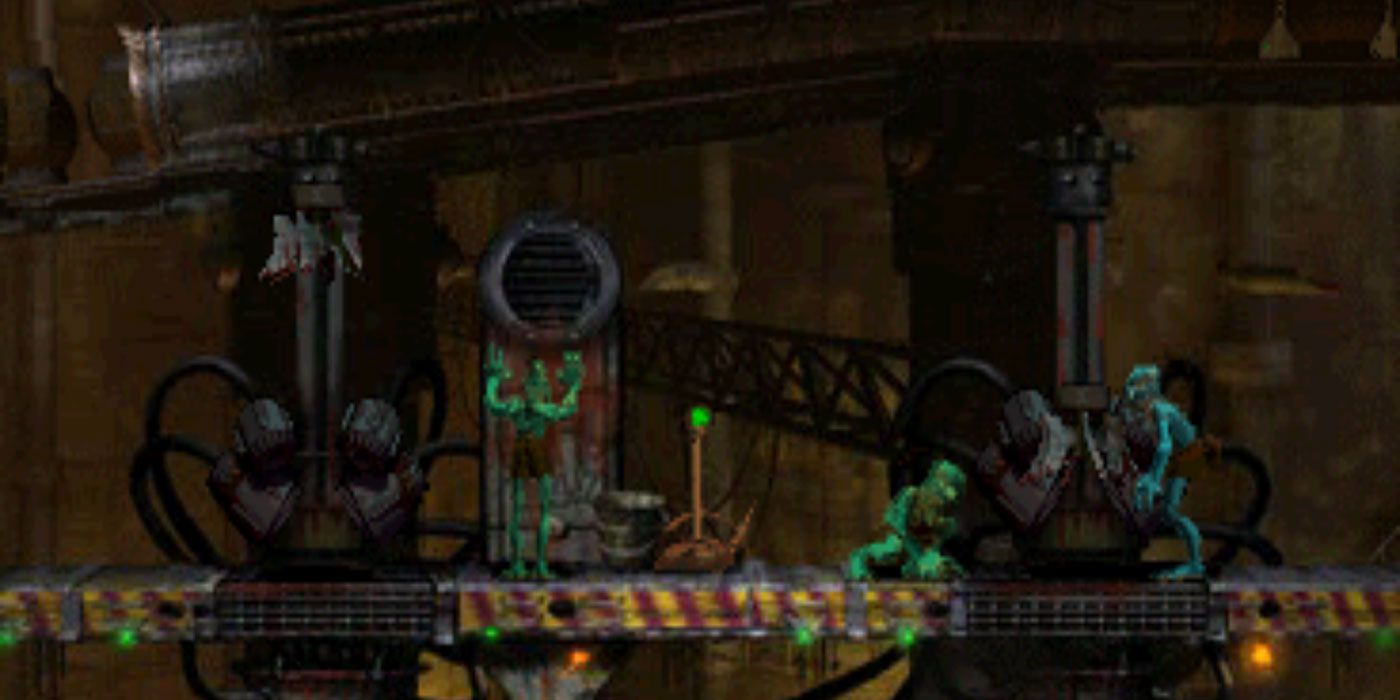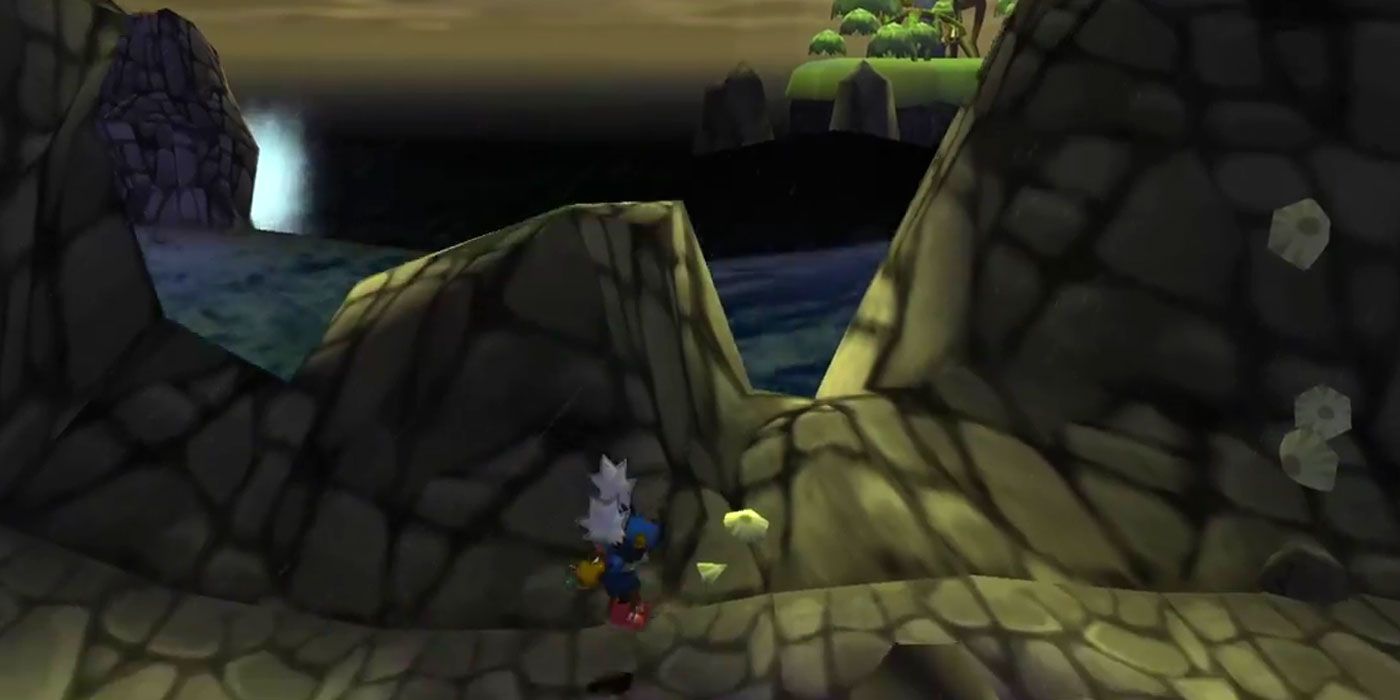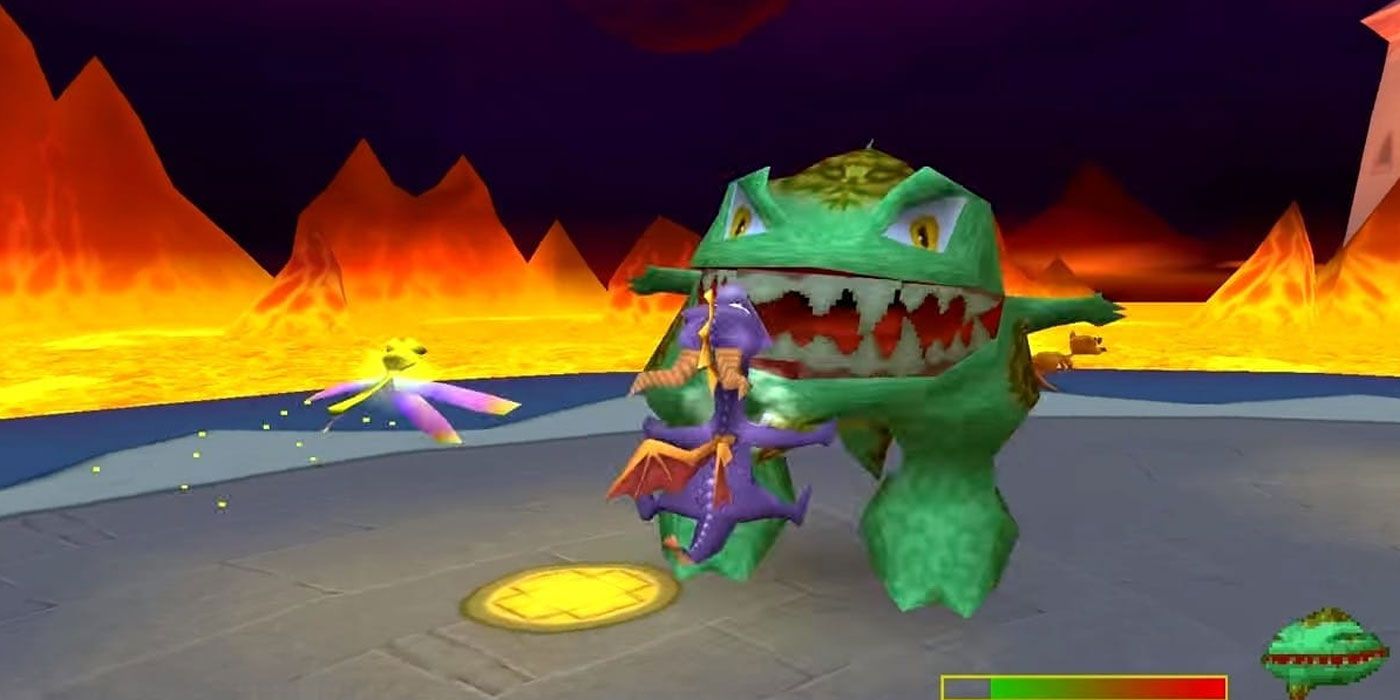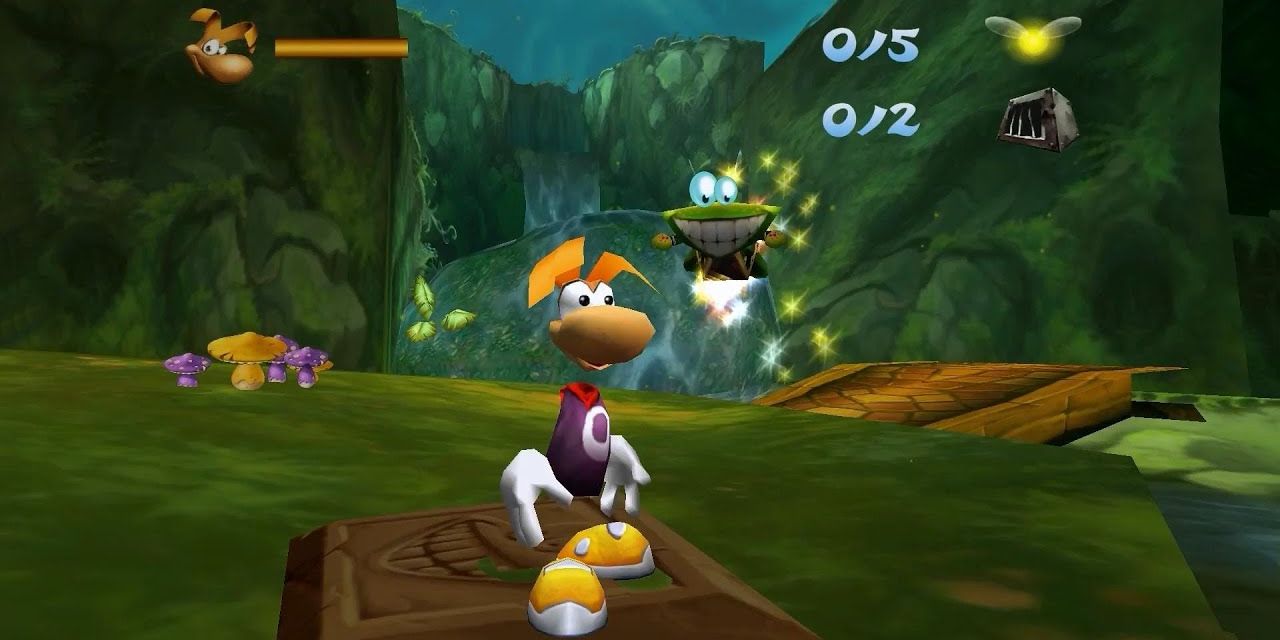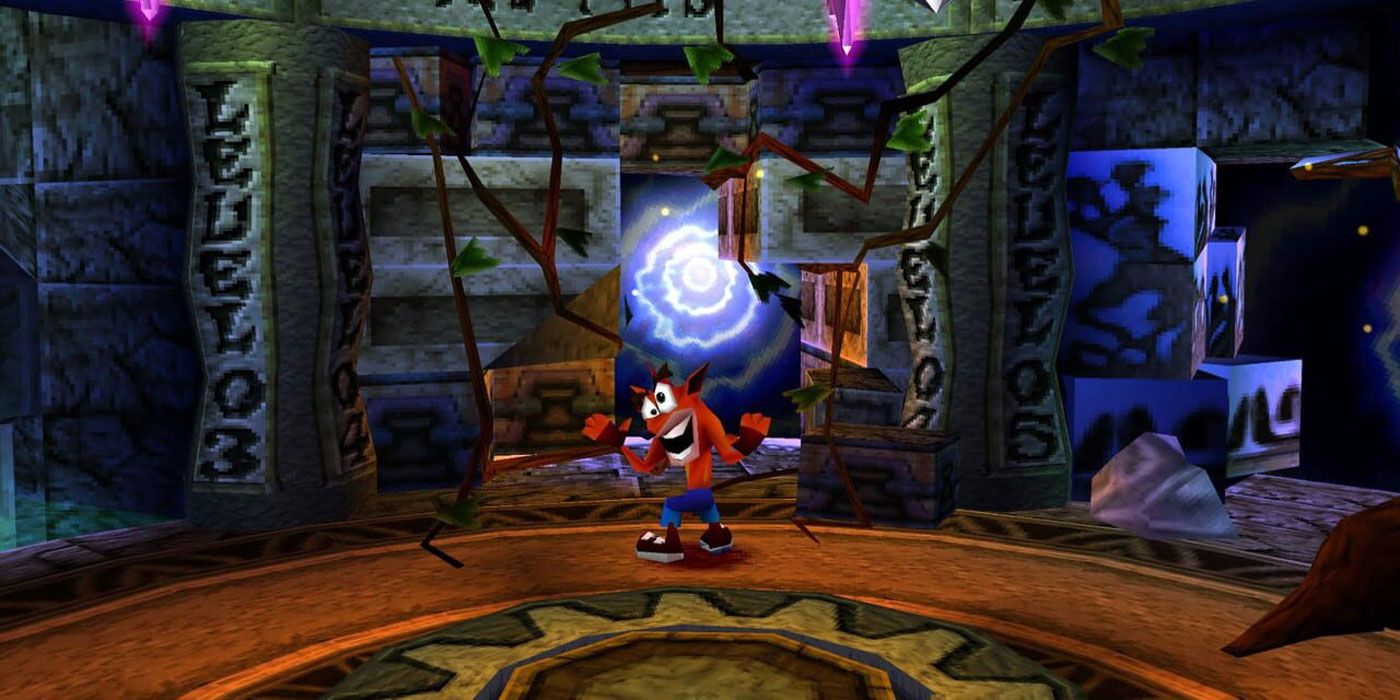First landing in Japan in December 1994, the PlayStation 1 was an ambitious console, with Sony plunging into the video game landscape in an audacious manner. In order to stand out and succeed, the console needed a library of popular and critically acclaimed titles. Sony assembled just that, and a number of those exceptional releases came from the platformer genre.
This generation of games was a hotbed of innovation and pioneers. In terms of platformers, Super Mario 64 changed the game over on the Nintendo 64 in 1996, then acting as the measuring stick for what a modern platformer looked and played like. While some have been lost in Sony's shuffle, this selection of PlayStation 1 platformers matched and surpassed those expectations, still standing as super enjoyable experiences for gamers even to this day.
Oddworld: Abe's Oddysee
Developed by Oddworld Inhabitants, Oddworld: Abe's Oddysee launched in late 1997 as an extremely unique entry into the PS1's growing catalog. Where most games might look to empower the player, Abe's Oddysee strips things back, putting players in the shoes of the titular Abe, a weak Mudokon runt on a quest to liberate his people. Abe's Oddysee found acclaim from its compelling narrative and art direction, but the gameplay is what secured it as a legend of the PS1. The game is known for being notoriously difficult, with a complex and sophisticated approach taken to the puzzles. Abe's Oddysee challenges the player, requiring them to put more thought than ever into a platformer. After all, they are trying to liberate an entire enslaved people.
Klonoa: Door to Phantomile
Originally released in 1998, Klonoa: Door to Phatomile saw players take on the role of Klonoa, an adorable, fuzzy character going on an adventure to save the world from the evil forces of nightmares. Klonoa: Door to Phantomile was an early adopter of the 2.5D perspective in platformers. While the action takes place on a side-scrolling 2D plane, the environments framing it are all rendered in 3D -- seen in more recent hits like the LittleBigPlanet series. Whilst seemingly simplistic to begin with, Door to Phantomile's puzzles continually developed as the game progressed, compelling players to build upon tactics and using a combination of methods to reach the next stage of their quest.
Spyro: Year of the Dragon
After releasing two back-to-back hits with Spyro the Dragon and Spyro 2: Ripto's Rage!, Insomniac Games built upon their foundations for the threequel, Spyro: Year of the Dragon. Spyro had become an icon of the PS1 after his first two titles, but Year of the Dragon hammered that point home. The series had already improved upon the 3D platforming genre, tasking characters with exploring hub worlds and using various abilities to complete tasks, but Year of the Dragon took all the best aspects of the previous two to new heights. This third installment in the series introduced the ability to play as a range of characters to assist Spyro on his quest, an ambitious feature to include and pull off well, even today.
Rayman 2: The Great Escape
Like Mario before him, Rayman also took the bold step from side-scroller to open 3D platformer with the release of 1999's Rayman 2: The Great Escape. Developed by Ubisoft, Rayman 2 received universal praise for near enough every aspect of its creation and won the hearts of many PS1 owners. The game was lauded for its near limitless appeal and accessibility, acting as a welcome entry for young audiences and hitting the spot for seasoned gamers. Slick gameplay, impressive visuals and an inviting world made Rayman 2 an exemplar platformer for the PS1 that has stood the test of time and is still remembered as one of the console's greats.
Crash Bandicoot 2: Cortex Strikes Back
While any of the original Crash Bandicoot trilogy could easily stand out in a crowd of platformers, Crash Bandicoot 2: Cortex Strikes Back takes the cake as the premier title of the three. Similar to Spyro, it took what was great from the original game and made them even better. Crash 2 featured an array of environments and characters that would define the franchise, such as the polar bear and penguins on the snow levels that fans of the series dearly remember. The controls were tightened up, and levels were given more variety to keep the player coming back for more of the bandicoot's journey to defeat Cortex. For those looking for the Crash Bandicoot experience, then 1997's Cortex Strikes Back is the best the series has to offer.
These titles are just the tip of the iceberg in terms of the PlayStation 1's incredible library of platformers. From obscure one-offs to sequels and spin-offs, the legacy of these incredible games live on thanks to a number of remastered re-releases and revamped sequels, allowing a new generation of gamers to get their first taste at favorites from decades ago. The PS1 started a platforming revolution, and the genre only got better from there.

